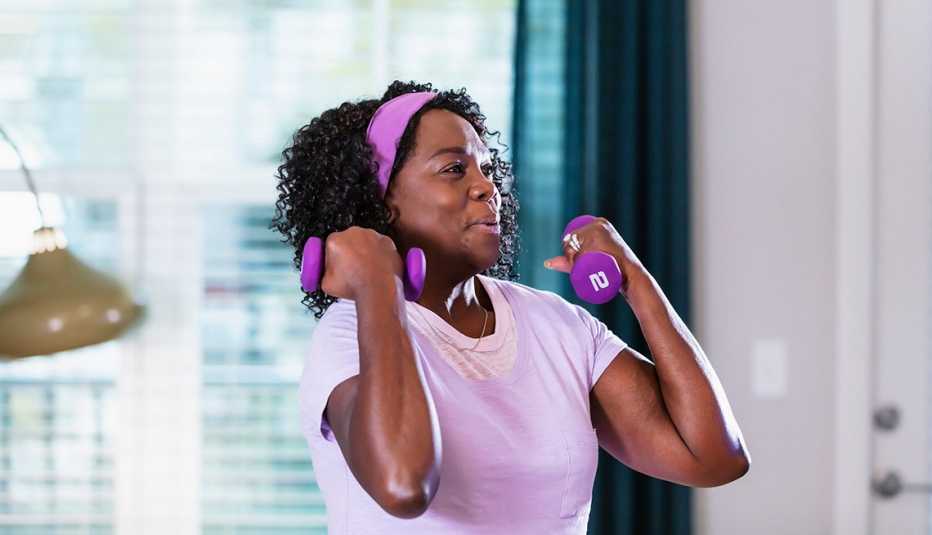Staying Fit


It’s no secret that exercise is key to a healthier and longer life. As you have likely heard, federal guidelines recommend at least 150 minutes of moderate aerobic activity every week. Think: five days of 30-minute workouts like brisk walking, dancing or cycling. The guidelines also call for at least two sessions of strength training per week.
But how much exercise do you really need to get life-extending benefits? Is 150 minutes a week the optimal amount of exercise for a long life, or should you strive for more? What if you measure your exercise in steps, not minutes? And how many years do other types of exercise, like strength and balance training, add?


AARP Membership— $12 for your first year when you sign up for Automatic Renewal
Get instant access to members-only products and hundreds of discounts, a free second membership, and a subscription to AARP the Magazine.
Recent studies on the links between activity and longevity help shed light on those and other questions — with some surprising takeaways for older adults in particular. (For instance, more doesn’t appear to be more when it comes to strength training, while stretching emerges as a potential lifesaver.) Here’s what research and experts say about the right dose of exercise to enhance your life span.
Just 2 minutes of activity can help you live longer
If you’re unable to do the recommended 150 minutes a week, you may be tempted not to bother getting off the couch. But that would be a mistake, because research shows that even small amounts of exercise give you a longevity boost, says William E. Kraus, M.D., past president of the American College of Sports Medicine.
In fact, a 2022 study published in the journal Nature Medicine found that people ages 40 to 69 who engaged in spurts of movement for just one or two minutes, three times a day, significantly reduced their risk of death from heart disease or cancer, compared with those who weren’t physically active at all.
Another study, in the British Journal of Sports Medicine, found that just 11 minutes a day of “moderate-to-vigorous” activity significantly lengthened the life spans of people who spend most of their day sitting.
“There is no least amount of exercise you need to do,” says Kraus, a professor in the division of cardiology medicine at Duke University, who helped write the 2018 activity guidelines. “It turns out that anything is better than nothing.” In other words, not being able to hit 100 or 150 minutes for whatever reason shouldn’t discourage you from accomplishing smaller amounts.
In fact, he notes, someone who goes from not exercising at all to 20 minutes of exercise a day is going to net significantly more relative gain — or more bang for their buck — than someone who increases their exercise from, say, 80 to 100 minutes.
In recent years, epidemiologists have been trying to figure out not just the minimum but the optimal amount of exercise for a long life. So far, the research is mixed.
One large study that followed 416,000 people showed the greatest longevity benefits were associated with about 700 minutes a week of moderate exercise — that’s more than four times the official recommendation. Another followed 661,000 people and found that 450 to 750 minutes a week (7.5 to 12.5 hours) was the optimal amount.
However, a study published in August 2021 in Mayo Clinic Proceedings better coincided with the federal guideline. It found that people who exercised between 2.6 and 4.5 hours a week (156 to 270 minutes) had the most improvement in life expectancy. They were about 50 percent less likely to die in a 25-year period than those who didn’t exercise.

































































More on Health
The #1 Exercise to Do as You Get Older
If you only have time for one exercise, fitness experts say, do this one
7 Best Arm Workouts to Help You Get Stronger
This easy upper-body workout may help you feel (and look) stronger
Losing Weight Can Be Good for Your Heart
And the benefits stick around, even if some weight is regained